This article is part of the multilingual ELMO series CEE housing movements resisting neoliberal urban transformations.
This article[i] gives a brief overview of the last 30 years of the Hungarian housing movement[ii] and housing policy. It divides the era into four phases and gives an insight into how organizations – both on the left and the right – representing disadvantaged people responded to the policy challenges of their era.
The story begins in the turbulent 1990s when various disadvantaged groups – Roma and non-Roma low-income public housing tenants, squatters, and homeless people – demanded a solution to their housing problems. In the second half of the 1990s, the movement entered a phase of institutionalization; a homeless care system was established, and legal advocacy started. The era confronted advocates and communities not only with the fact that the authorities attempted to solve the housing crisis by excluding Roma people, but they also realized that the mismanaged housing crisis is a breeding ground for ethnic conflict. The 2000s saw a new state-funded program to dismantle segregated neighborhoods and witnessed the emergence of activist youth critical of globalization. After 2008, the most deprived raised their voice again. Homeless people and public housing tenants were organized by leftist groups, while indebted homeowners promoted claims through right-wing organizations. These constituencies were clearly demarcated along political ideologies. The left in Hungary ultimately failed to address one of the most crucial housing issues of the decade, the global financial crisis.
This birds-eye-view shows that those working for fairer housing have been upwind for the past three decades or more. On the one hand, their stories expose the contradictions of a democratic-capitalist transformation; on the other hand, their emancipatory struggles are ephemeral manifestations of a social order where marginalized groups and their allies stand up against profit-oriented economic and political interests.
The article aims to look at the movement’s history to help currently active organizations – in Hungary and Eastern Europe – critically assess their role, increase their effectiveness, and enhance possible collaboration.

Rescuing what can be rescued! (1989-1995)
Housing was one of the most important sources of legitimacy for the state socialist regime. The party leadership sought to ensure acceptable conditions for its citizens through a public housing system, state-subsidized housing construction programs, and by keeping utility costs down. From the early 1980s, as the economic performance got worse, socialist housing construction gradually declined, and the operation of the public housing sector became increasingly unsustainable. Bad management also led to the deterioration of collective property. Tens of thousands of units became vacant, and rent increases more frequent. In addition, the crumbling socialist system also increasingly cut off subsidies to those living in workers’ hostels. In 1988, the rent increased sixfold overnight, making life for low-paid workers extremely difficult. This caused broad dissatisfaction, and public housing became a mobilizing force.
The tenants organized themselves the most quickly and broadly. The national Tenant Association (Lakásbérlők Egyesülete) was founded on September 12, 1988, in Budapest, and in the next few months, membership multiplied to thousands across the country.[iii] The chapters advocated fairer public housing and protested against rent increases and lack of renovations. A few dozen tenant communities took over the management of their housing units from the state and created self-governing tenant associations.[iv] In addition, the national organization’s leaders consistently warned that marketization and liquidation of public housing property would have disastrous consequences. In 1989, they also formed a short-lived grand coalition with disabled people, pensioners, and trade unions.
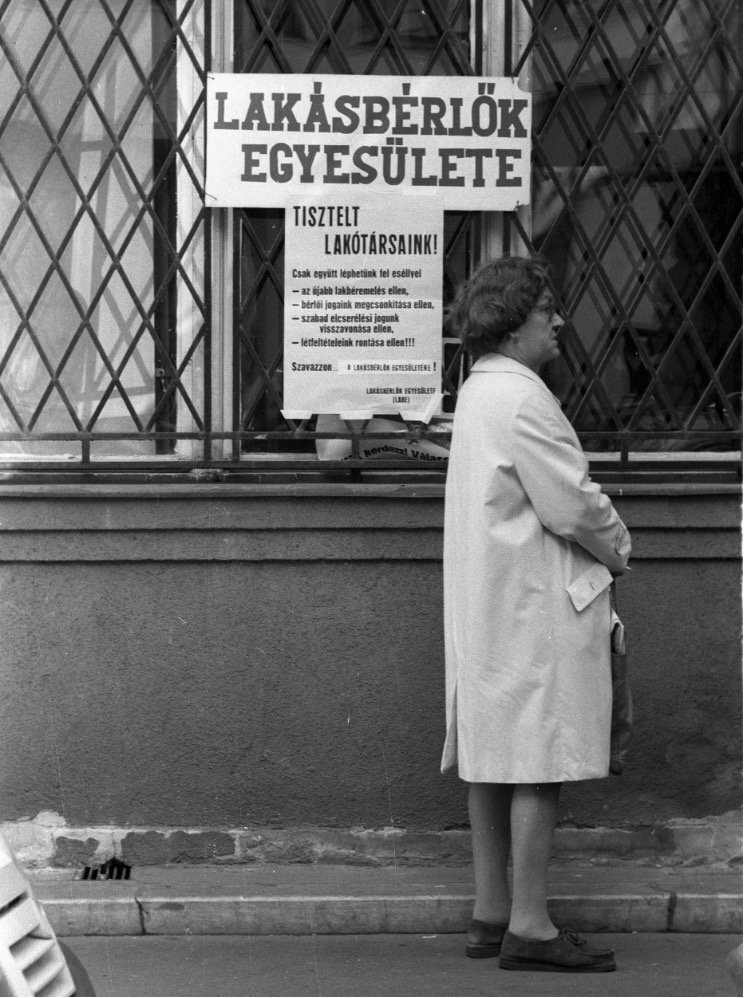
In a parallel but separate effort, Roma tenants and squatters set up the Anti-Ghetto Committee (Gettóellenes Bizottság) in Miskolc in 1989. It was a response to a plan by the local council to evict and relocate Roma residents to a ghetto-like settlement outside the city. A leader from the Roma community recruited a small group of Roma and non-Roma intellectuals from Budapest, and they planned a campaign together to prevent the evictions. The allies set up a fact-finding committee and found that no one wanted to move to the outskirts of the city, and most families had concrete ideas on how they could improve their housing situation if they received social or administrative support. With the help of the allies, the Anti-Ghetto Committee could mobilize national public opinion, forced the authorities to back off, prevented the eviction, and developed alternative housing solutions.[v]
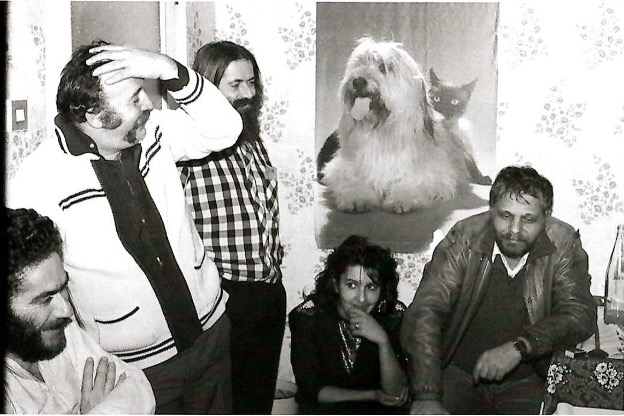
Homeless people also responded to the crisis on a smaller scale and started demonstrations in Budapest on November 29, 1989.[vi] They demanded the utilization of vacant housing units, and a delegation of three submitted a petition to a top city official. The socialist leadership – already facing a crisis of legitimacy – did everything to remove poverty from public spaces as quickly as possible to avoid the escalation of tension. From November 30 onwards, the party handed over unsuitable buildings, some of them without heating and hot water, to charity organizations. The first shelters were set up as a result of these homeless protests. Many demonstrators tried to keep the wave of protests alive and organized a strike at the Southern Railway Station, tactically blocking the ticket offices for days. The fact that many homeless people wanted housing (and not shelters) was evidenced by other small protests across the country.
The hope and efforts to retain and reform the management of the robust public housing stock inherited from state socialism were undermined by capitalist urban development and privatization. Between 1990 and 1992 alone, 30 percent of the stock (210,000 units) was sold.[vii] The privatization frenzy caught up with the members of the Tenant Association too, who eventually sought to negotiate favorable terms of marketization. Meanwhile, poor and low-income people received little professional, ideological, or political support to turn their organizing initiatives into strong constituency-led organizations and were swept away by the capitalist-democratic transformation.
The age of institutionalization (1995-2002)
By 1995, it was clear that the Roma population was the biggest loser of the regime change. While over half of the Roma families had no active wage earners, this was true for one-third of non-Roma families. There was also a housing dimension to their impoverishment, as most Roma lived in poorly served, decaying villages or moved into the slums of cities. For decades under state socialism, the realistic alternative for those who did not have housing was to occupy the vacant and plentiful public housing. These were often damp, degraded, dilapidated apartments that no one wanted. The practice was that the council would not evict squatters without providing alternative housing, but from the mid-1980s, this increasingly changed. Although the squatters came from various social backgrounds, the evictions were ethnically targeted: authorities disproportionately harassed Roma families moving from the countryside to the capital due to the deteriorating economic situation.
Pushing poor – often Roma – people out of the cities, where they had fled to escape rural poverty, was not a real solution. Those who had been pushed out of one district were popping up in another or in disadvantaged rural towns and villages. It is even more evident today that these forced evictions reinforced the hopelessness of the deprived regions. The Roma Civil Rights Foundation (Roma Polgárjogi Alapítvány), established on May 9, 1995, responded to the immediate consequences of this mismanaged housing crisis. Its small staff provided individual legal case management and social work for hundreds of people threatened by evictions. Their primary objective was to negotiate with the municipal governments, directly involving the people affected. They used protests and the tactic of human chains as a last resort. Although the foundation was connected to several Roma communities and had wide media coverage, it was left with little resources to organize a solid grassroots base. As a result, they could not mobilize enough people in 2005 when they launched a national housing advocacy campaign to ban evictions without adequate alternative housing.
Despite the increasing hardship for people of low status, the number of constituent-led organizations engaging in conflict for social change declined. Donors’ expectations of institutionalization (registering the organization, keeping books through formal accounting etc.), the bureaucratization involved in the formalization of organizations, and the increasing value of the role of the expert, particularly as approaching the EU accession, all pushed organizations towards NGO-ization.[viii] Several of these formal organizations became stable, reliable pillars of the housing movement but also ran the risk of being distracted by the burden of financial survival and becoming project-based or transactional in their relationship with beneficiaries. On the other hand, organizing and sustaining a community base required specific professional and financial resources, which were not there.
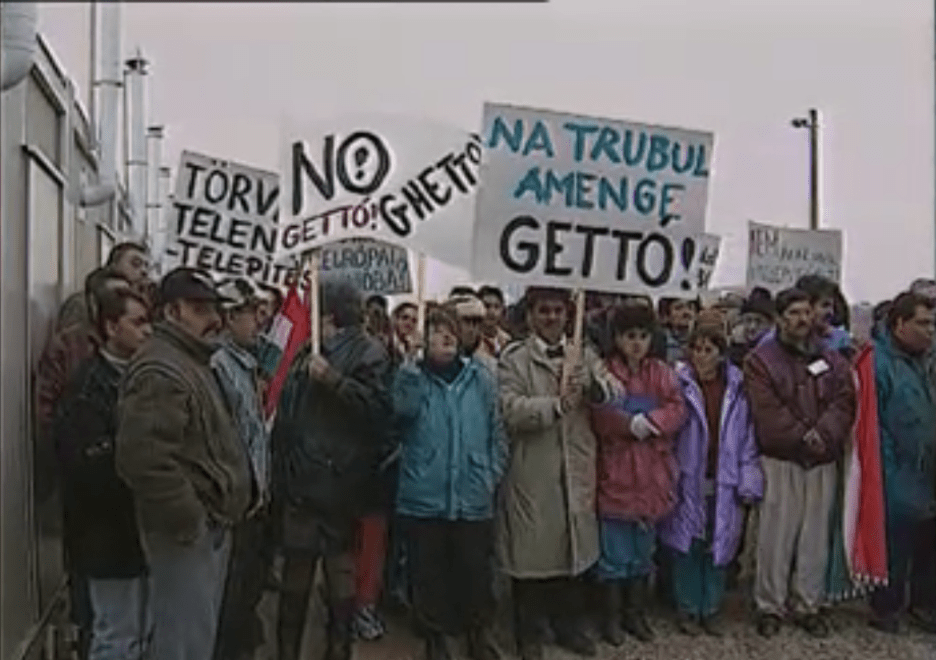
Globalization critics and local innovators (2002-2008)
Since the end of the 1990s, economic stabilization in Hungary had led to a boom in housing mortgages and construction. A market-based housing finance system was set up, making housing affordable for better-off families. By the early 2000s, urban redevelopment initiatives were beginning to crowd out low-income people and displace homeless people from urban neighborhoods. Many historic buildings were left to fall into disrepair for property speculation. As a counterbalance, the government introduced a progressive benefit system and launched a small-scale desegregation program to improve the substandard housing conditions of the Roma. According to the 2011 census data, there were nearly 1,400 predominantly Roma segregated neighborhoods or enclaves with substandard housing, inhabited by 280-300,000 people in more than 700 municipalities across Hungary. Over the five years of the program, only a few hundred families received support.[ix]
The worldwide liberalization of capitalist markets and trade that has been unfolding since the 1970s (neoliberal globalization) was criticized by the alternative globalization or alterglob movement. In Hungary, the Humanist Movement (Humanista Mozgalom) was the first to take up the cause of housing, and in 2004, it set up a network of volunteers called People Of The Streets (Az Utca Embere). They organized annual all-night demonstrations with a vigil involving homeless people and demanded the constitutional recognition of the right to housing. The capitalist use of space, driven by gentrification and property speculation, was criticized along anarchist lines by the Centrum Group (Centrum Csoport), founded also in 2004. These activists occupied properties on four occasions.
Disconnected from this leftist urban subcultural scene, Roma communities requested that their municipalities use government subsidies to dismantle segregated neighborhoods and relocate Roma families into the closest villages and towns. However, these organizations, such as the Organization for the Roma of Szomolya (Szomolyai Cigányokért Szervezet), the Poor Relief Fund Eger (SZETA Eger), or the Association of Roma Minority Representatives and Advocates of Nógrád County (Nógrád Megyei Cigány Kisebbségi Képviselők és Szószólók Szövetsége), were often met with the resistance of the municipal leadership, the far-right party Jobbik, or some residents. For many of these Roma organizations, this simple act of requesting government subsidy became a protest itself. However, after successfully maneuvering the local power field, they could provide new homes for Roma people formerly living in segregated, substandard housing conditions.
By the mid-2000s, we see a complex movement landscape consisting of professional advocacy organizations, committed local innovators and alterglob activist groups, which linked the issue of homelessness to the culture of radical protest. In addition, the state’s homeless care system developed, although its conditions were continuously contested by organizers. However, this image of a strong movement infrastructure was deceptive. The actors were not unified or were sometimes alienated by each other’s strategies, tactics, and language. The movement failed to frame a message or build a narrative that many people could relate to, including the hundreds of thousands living in precarious housing conditions.
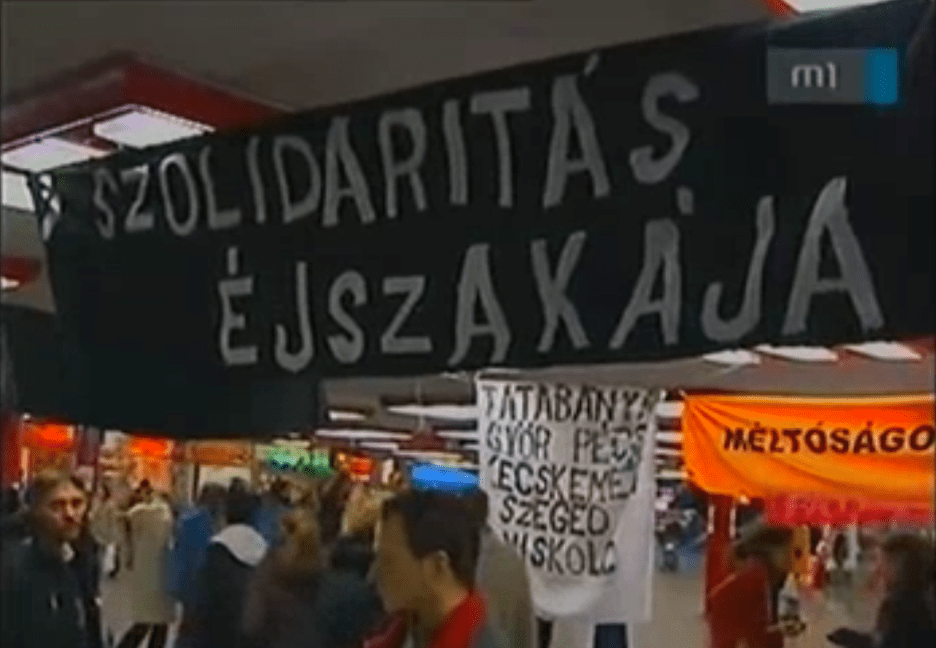
The marginalized and their allies (2009- )
By the end of the 2000s, affordable housing solutions remained small-scale, and governments turned to the market to increase homeownership. After forint loans had become too expensive due to lavish budget spending by the state, they were replaced by cheaper foreign currency loans. Their popularity grew rapidly and left households vulnerable to financial markets because of lax regulation and exchange rate risk. Thousands of people were evicted in the aftermath of the 2008 global financial crisis. The debtors had to wait for three years for the first major bailout, and the measures offered limited assistance to low-income foreign currency debtors.[x] Nonetheless, after 2015, housing policy became increasingly subordinated to the government’s family policy, which consistently allocated more resources to better-off households than low-income families.[xi]
After the economic crisis of 2008, organizations in the housing movement were clearly demarcated along political ideologies. Leftist groups (still) took the lead in representing the most disadvantaged such as homeless people and low-income public housing tenants. The City Is For All (A Város Mindenkié), a grassroots cross-class housing group, was founded in August 2009 in Budapest by homeless people and their allies. Their mission was to reclaim the right to housing, to change the discourse about homelessness, and to elevate homeless people and public housing tenants as community leaders. Therefore, homeless members represented The City Is For All to the public. They were regular spokespersons in the media, at demonstrations and attended parliamentary committee meetings. The organization campaigned against the criminalization of homelessness, a measure enabling Hungarian authorities to impose a penalty for rough sleeping. They protected many people from evictions, organized for public housing, and defended the rights of shack dwellers. As a result of their work, in October 2014, a precedent-setting case ruled that shacks cannot be demolished without due process because the shack and the property inside cannot be treated as “garbage”. The first long-term Housing First program[xii] in Hungary, which provides housing for homeless people living in shacks, also grew out of a protest organized by The City Is For All to protect huts from demolition. The organization shaped public thinking on the housing crisis for nearly ten years and achieved the self-organization of homeless people that their predecessors in ’89 had failed to complete.
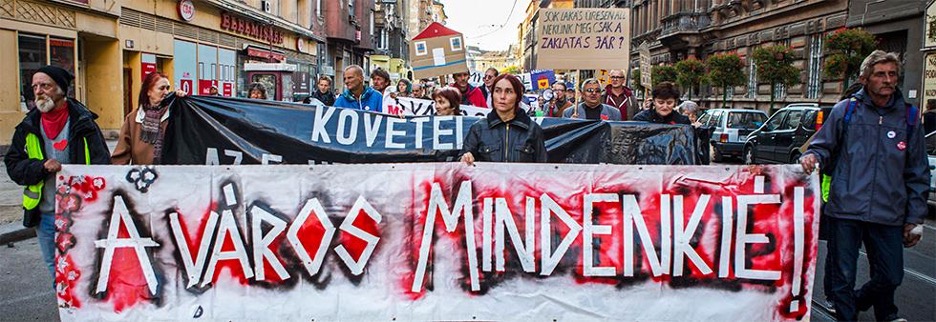
On the other hand, the organizing of foreign currency debtors was typically embedded in a narrative of defending the Hungarian people against banks, often interspersed with radical nationalist symbols and slogans. In 2009, the newly organized Social Association of Home Defenders (Otthonvédő társadalmi egyesülés) created grassroots units – so-called rapid-response self-defense zones – across the country to prevent evictions. The basis of their operation was that people living in the affected neighborhoods would join forces and mobilize together to prevent evictions. Their work catalyzed the emergence of other self-help and protest groups and advocacy organizations, which confronted banks and debt collectors during the evictions or at court.
In spite of all this, rightist housing organizations were unable to create lasting movement institutions. However, leftist organizations enriched the movement’s infrastructure with several new players. The City Is For All has been a breeding ground for three new organizations: Streetlawyer (Utcajogász), a legal housing advocacy organization, established in 2010, picking up the baton after the Roma Civil Rights Foundation ceased to exist the same year; From Street to Housing! (Utcáról Lakásba! Egyesület), a service organization, founded in 2014, promoting innovative, affordable housing solutions (including the above-mentioned first long-term Housing First program) that extended the rank of organizations such as the international Habitat for Humanity; and the School of Public Life activist training institute and participatory action research center since 2014. From 2018, the movement’s policy capacity expanded with the Periféria Policy and Research Center, which, together with the Metropolitan Research Institute, is aiming to put policy know-how at the service of the movement.
For the past 10 years, consistent organizing and the polarized political playing field led to opportunities for successfully engaging the opposition with housing policies. In 2017, at an election forum before the 2018 general elections organized by The City Is For All, six opposition parties publicly expressed their commitment to key housing policy reforms. In addition, many candidates campaigned with housing in the run-up to the 2019 municipal elections. As a result, when the opposition won a significant number of local seats in 2019, several municipalities anticipated long-awaited innovations in public housing management. This has been also supported by the fact that several movement leaders ran for office and succeeded to get appointed to influential positions within local administrations.[xiii] It raised high hopes for many movement organizations that the opposition parties renewed their commitment to housing in the run-up to the 2022 general elections. Their electoral defeat, however, has prompted the organizations to rethink their strategy.
Concluding thoughts
From time to time, activists raise their voice to tell the world about the urgency of the housing crisis. In fact, in Hungary, the situation has not changed much since the 1990s; even the number of people living in precarious housing conditions is about the same, two to three million. In practice, social innovators, housing activists, constituents and decision-makers have been facing the same challenge for decades: how can they raise the affordable housing stock at a scale to ease the extensive housing poverty?
In the last eight years, a few organizations, with the pioneering work of From Street to Housing!, Habitat for Humanity and the Metropolitan Research Institute, started some innovative programs. As a result, hundreds of previously uninhabitable public housing units have been renovated. This is a small portion of the 14,000 vacant units but it demonstrates the potential to significantly increase public housing stock. In addition, From Street to Housing! is providing incentives to homeowners to rent their vacant flats to low-income earners through its nonprofit housing agency.[xiv] These initiatives, however, cannot offer sufficient solutions without proper financial resources and a supportive legal environment; to tackle the housing crisis, political commitment – both at the governmental and municipal level – is necessary.
However, after the 2022 general elections, getting this political support remains far from evident. The ruling party, FIDESZ-KDNP, which won its fourth consecutive victory, consistently allocates more resources to better-off households than low-income families and systematically punishes opposition municipal governments by draining them of resources. Movement organizations face the challenge of creating political opportunities and strengthening the movement infrastructure in a hostile political environment. What can provide leverage?
It is conceivable that some social groups with little organizational representation (e.g., low-income tenants in the private rental sector or public housing tenants) will have to face the consequences of flawed housing policies, exacerbated by the economic consequences of the coronavirus pandemic and the war in Ukraine. Embracing the representation of these constituencies might increase the influence of leftist movement actors on progressive housing reforms, in particular, in the run-up to the 2024 municipal elections. There are some signs of reaching out to new, formerly unrepresented constituents. For example, Habitat for Humanity has addressed tenants in the private rental sector, and Periféria Center (with its tenant housing association) targets people with stable but low income. The possibility that municipalities may apply for funds directly to the EU may also create new resources.
Another strategic decision facing the organizations is whether they will build a constituency-led movement or an expert-driven infrastructure. In the last few years, the organizing pillar of the movement has substantially shrunk because former organizers started new careers in the field of politics and research (giving a new form of support to the movement), and a new generation of organizers has not yet emerged. Can current movement organizations provide support to develop new leaders? Will they stay on the path of representing concrete interests through constituent participation?
Movements often gain a strategic edge when the infrastructure consists of organizations employing different strategies and tactics, the leadership is rooted in constituencies, and relationships cross geographic and social boundaries. The last thirty years of the Hungarian housing movement underpins this observation. Building a heterogeneous structure requires openness from potential allies because actors may have different ideas about what strategies lead to social change. However, we are in the same struggle, and our efforts could complement each other. The key question is whether movement organizations can create the awareness that they are building something together.
Read the article in CEE languages on ELMO member platforms:
- in Romanian on Platzforma, Gazeta de Artă Politică and Baricada România
- in Hungarian on Mérce
- in Serbo-Croatian on Mašina and Radnička prava
- in Bulgarian on dVersia
- in Czech on A2larm
[i] This article is a truncated version of the in-depth study Sebály B. (2021). “We all have to live somewhere!” The last three decades of the Hungarian housing movement – a bottom-up view –1989-2021. In: Vankó, L. (ed) Annual Housing Report 2021, Budapest: Habitat for Humanity Hungary. The report was originally published in Hungarian.
[ii] I draw on Diani’s definition which describes a social movement as a network of individuals and organizations, which engage in a political or cultural conflict and share a collective identity. Diani, M. (1992). The Concept of Social Movement. The Sociological Review 40(1), 1-25.
[iii] For this event and the history of other Hungarian movements, see https://mozgalmak.hu/.
[iv] Győri P., Matern É. (1995). Lakásügyi szerveződések a 90-es évek elején Magyarországon. OTKA beszám. 12-14.
[v] Ladányi J. (1991). A miskolci gettóügy. Valóság 4:45-54.
[vi] Udvarhelyi É. T. (2014). Az igazság az utcán hever. Budapest: Napvilág Kiadó
[vii] Dániel Zs. (1996). A bérlakás-privatizáció paradoxona. Nemzeti ajándék vagy ráfizetés? Közgazdasági Szemle XLIII., March, 204-230.
[viii] Lomax, B (1997). The strange death of ‘civil society’ in post‐communist Hungary. The Journal of Communist Studies and Transition Politics 13(1):41-63., Henderson, S. L. (2002). Selling civil society. Western Aid and the Nongovernmental Organization Sector in Russia. Comparative Political Studies 35(2):139-167., Jacobsson, K. and Saxonberg, S. (2013). Beyond NGO-ization. The Development of Social Movements in Central and Eastern Europe. Routledge
[ix] Farkas Zs. (2017). “Telepszerű lakókörnyezet volt a hivatalos elnevezése…” Doktori értekezés, ELTE Társadalomtudományi Kar Szociológia Doktori Iskola
[x] Csizmady A., Hegedüs J., Vonnák D. (2019). Lakásrezsim és a devizahitel-válság: intézményi és egyéni stratégiák. Szociológiai Szemle 29(1):4-32. (11.)
[xi] Czirfusz M. and Jelinek, Cs. (2021). Lakhatási közpolitikák és a lakhatás megfizethetősége az elmúlt három évtizedben. In: Vankó, L. (ed) Éves jelentés a lakhatási szegénységről 2021, Budapest: Habitat for Humanity Magyarország
[xii] In Housing First programs, homeless people with psychiatric and/or addiction problems sleeping rough move directly into permanent housing and receive other complex, integrated support. Fehér B. (2012). Közterületen élők lakhatási programjai. Esély 4:65-89.
[xiii] Sebály B. (2021). “We all have to live somewhere!”, Section 4.2
[xiv] According to the 2011 census, there are more than 430,000 privately owned vacant units.

Bernadett Sebály is pursuing a PhD at CEU’s Doctoral School of Political Science and Public Policy and a research affiliate at CEU Democracy Institute. Her field of research is the policy impact of social movements. Her dissertation focuses on the relationship between movement structure, constituent participation, and policy impact in the Hungarian housing movement between 1989-2021. Her goal is to link the worlds of social movements and academia in a fruitful way to both. She draws on her ten years of experience working in various sectors of civil society. She is proud to have helped design and build a community organizing program in Hungary, coordinated Civilizáció, a national network of CSOs, and co-founded and organized in The City Is For All, a multi-class housing group. She has led participatory action research with the European Community Organizing Network and the School of Public Life, where she holds regular training.
